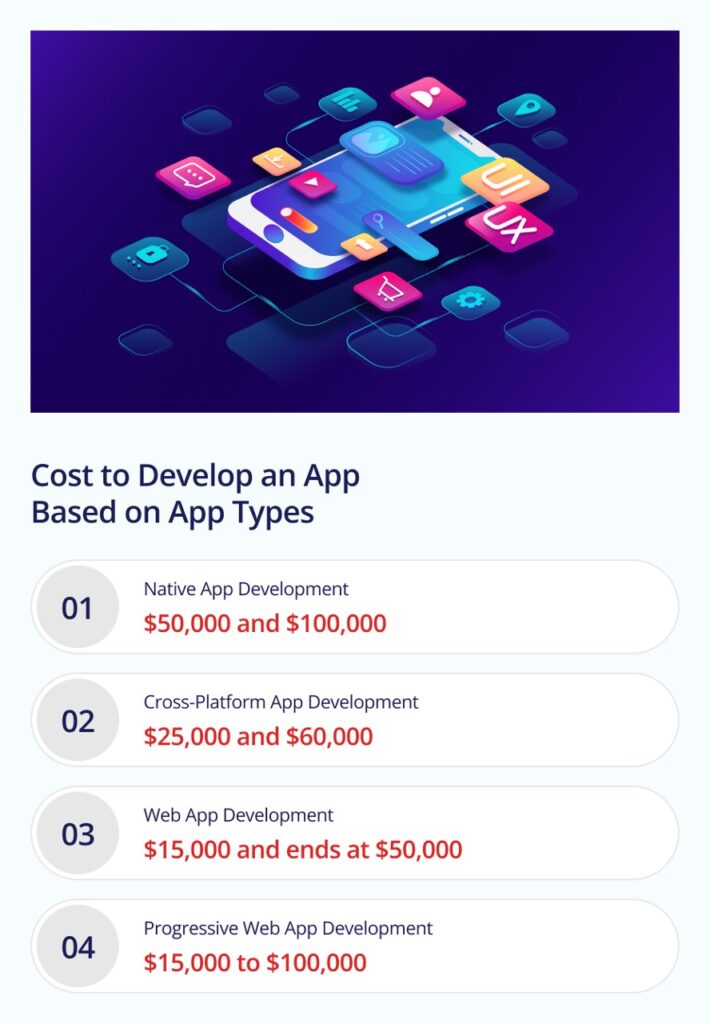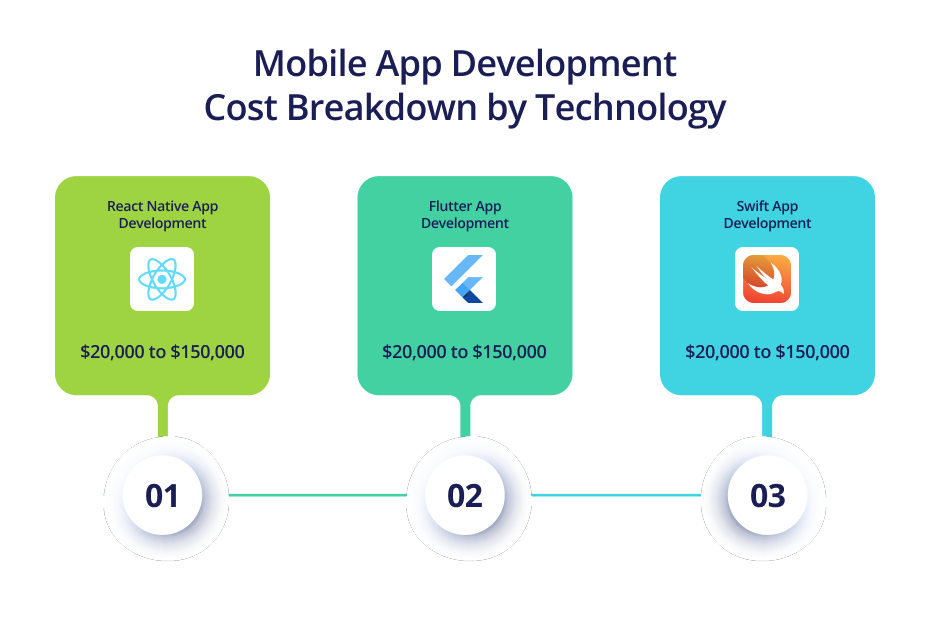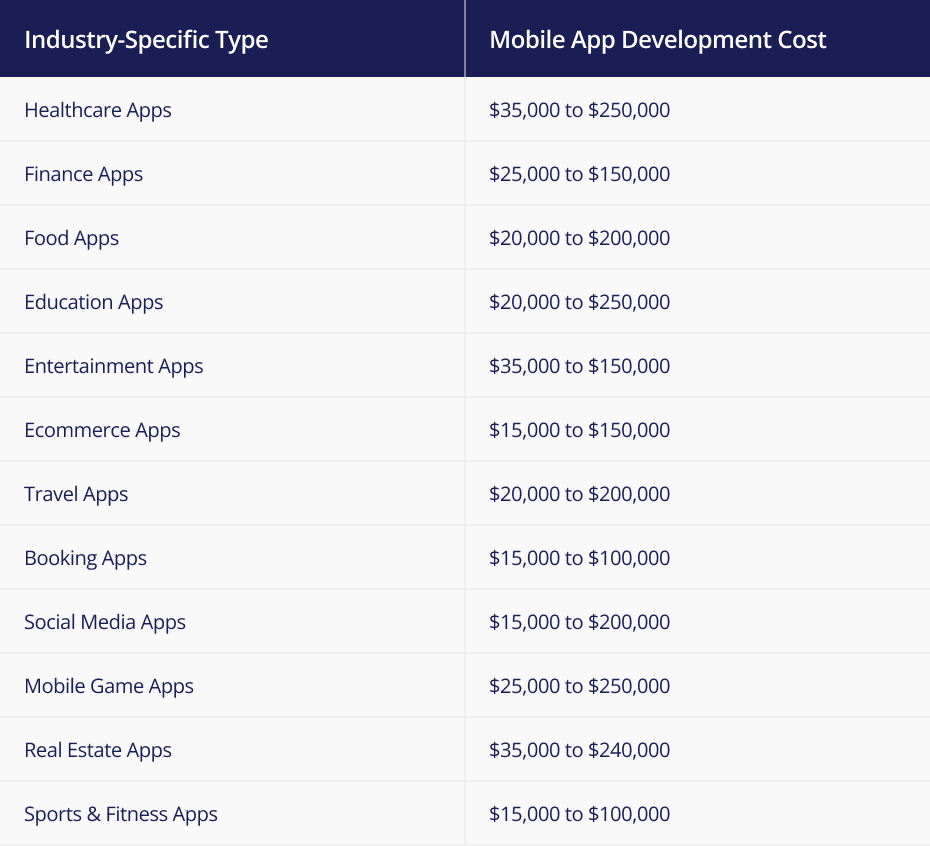There’s an app for everything. That is the talk of Silicon Valley. But every new app ends up in a never-ending race against its lookalikes. So, how does your app stand out? For example, before ChatGPT, AI was a distant concept. However, as soon as OpenAI launched the coveted LLM, GPT-3, others started following suit. In a year, there are now several such LLMs readily available. DeepSeek, Claude.ai, and the list goes on. The point is that ChatGPT was the disruption needed for such a trend to evolve.
This example establishes the need for a disruptive, not necessarily a never-thought-of, but uniquely executed idea, to thrive in the market. One factor, for instance, could be to introduce features and functionalities centered on user convenience. This can be said for widely accepted apps like Uber (a ride-hailing app), Evernote (a note-taking and task-management app), Snapchat (a multimedia instant messaging app), and many more.
When businesses get clarity about their modern app idea, they look for imperative aspects before beginning the development process. This drives the app development cost questions, such as how the Android app development cost differs from the iOS app development cost. Can there be ways in which the app development cost can be reduced? All these questions eventually assist them in making a concrete decision.
Understanding the pretext and bringing forth a bifurcated guide are among our responsibilities to drive a clear decision. With that pretext in the background, let us segmentize and evaluate all the aspects that eventually impact the mobile app development cost.
Cost to Develop an App Based on App Types
The app type for the mid-sized business or enterprise targets diverse audiences. For instance, the native app primarily focuses on a single device-based audience, while a cross-platform app does not differentiate. The same is true for web apps and PWAs.
Businesses’ target audience-specific needs ultimately decide their fixation. This brings us to the question of the difference among the type-based costs. To clarify, let us understand their specific functioning and app development costs.

1. Native App Development Cost
When businesses and enterprises across industries determine native app development, they target an audience specific to one platform. For instance, they can choose to target the USA-centric audience with an iOS app, but to target the global market, they can build an Android app. The cost to build an app with Native features lies between $50,000 and $100,000.
2. Cross-Platform App Development Cost
Customer-focused businesses often require apps on both iOS and Android, but the average cost to build an app increases when making two native apps. Cross-platform development solves this by using one codebase for both platforms, offering a seamless experience while cutting expenses. The cost usually falls between $25,000 and $60,000.
3. Web App Development Cost
Businesses need web apps that run on browsers across diverse devices and offer user-centric usability. These web apps tend to simplify cross-platform compatibility and reduce costs. They are also scalable and easily maintained. The web app development cost often begins at $15,000 and ends at $50,000.
4. Progressive Web App Development Cost
Combining the features and functionalities of web and mobile apps, the progressive web apps provide a native-like experience to users on web browsers. Often, businesses and enterprises find that accessibility and usability are worth investing in PWAs to engage with their targeted audience. Heading to the PWA development cost, the figures range from $15,000 to $100,000 for businesses and decision-makers to invest.
How Much Does It Cost to Develop an App Based on an Operating System
It would need to be completed to mention the app types and not mention the operating system. The operating system holds imperative value when discussing the mobile application development cost, as the entire app runs on it. These businesses choose from a limited range of operating systems, including Android app development, iOS app development, and Windows app development. You should comprehend the cost that goes into operating systems and ultimately make a decision.

1. Android App Development Cost
When talking about Android, it focuses on building applications for OS devices that leverage the efficiency of programming languages like Java and Kotlin. With Android experts at your end, the cost of Android app development often ranges from $20,000 to $250,000.
2. iOS App Development Cost
The programming languages for iOS app development are Swift or Objective-C for Apple devices. Ultimately, the cost of iOS app development ranges between $20,000 and $250,000.
3. Windows App Development Cost
Coming to the Windows app development focuses on the devices running the Microsoft Windows operating system. The cost to develop an app in Windows is $20,000 to $200,000 or more for extended applications built custom to the Windows platform.
Cost to Build an App With Intelligent Technology
As AI is no longer a concept, so are other intelligent technologies like ML, IoT, and AR/VR. Their adoption has been a revolutionary change that has changed the user perception of mobile apps. Some businesses might need AI-powered chatbots in their apps, while some might go for an immersive app experience via AR technology. The main question that arises is, how much does custom app development cost, keeping all the cognitive features in mind?
That can be answered with an understanding of diverse technologies and their subsequent app development cost.
1. Artificial Intelligence
AI is modernizing how mobile apps interact with users by integrating functionalities like personalizing shopping experiences and automating decision-making workflows. AI app development adds value by learning user behavior and offering predictive insights for businesses that are leveraging it to build more intelligent apps that evolve with usage patterns.
AI App Development Cost: $10,000 – $100,000
2. Machine Learning
Machine learning app development assists your app in making sense of data using entropy. It enables real-time classification, churn prediction, dynamic pricing, and spam filtering. The more complex the models, the more time it takes to train and refine them to deliver reliable outcomes.
Estimated Cost: $15,000 – $70,000
3. Natural Language Processing
Whether it’s a chatbot, virtual assistant, or smart translator, natural language processing (NLP) enables your app to comprehend and respond to human language. The implementation becomes more nuanced when you’re dealing with multiple languages, accents, or slang.
ML App Development Cost: $8,000 – $40,000
4. Augmented Reality
AR is redefining digital experiences with immersive AR app development, be it in e-commerce, real estate, or education. It creates immersive interfaces where users can try products, visualize environments, or engage with 3D content in real time.
AR App Development Cost: $15,000 – $200,000
5. Blockchain
Blockchain’s role in apps is growing, from enabling secure transactions to supporting crypto wallets and NFTs as a tamper-proof technology. Building security-first mobile applications requires in-depth architecture planning, smart contract creation, and continuous validation.
Blockchain App Development Cost: $30,000 – $150,000
6. Internet of Things (IoT)
IoT apps connect with smart devices, from health wearables to industrial sensors, and turn them into real-time information sources with IoT app development services. Security, device compatibility, and low-latency communication make this technology powerful and complex, and worth the investment.
IoT App Development Cost: $20,000 – $100,000
7. Virtual Reality
VR provides fully immersive digital environments ideal for training, simulations, or entertainment. Unlike AR, VR apps need high-performance rendering and compatibility with headsets and sensors, adding to the development scope.
VR App Development Cost: $25,000 – $250,000
8. Generative AI
Generative AI powers chatbots, content creation tools, and image/video generation. It’s used in apps that generate creative output based on user prompts or patterns, making content creation fast but requiring guardrails for accuracy.
GenAI App Development Cost: $15,000 – $80,000
Cost of Creating a Mobile App Based on Mobile-Focused Technology
The technology you use to build an app also affects the app development cost. It becomes crucial for business owners to understand the variations of functionalities and the reflected cost of choosing from the ton. It is time to concentrate on the technology and understand how it changes the final mobile application development cost.

1. React Native App Development Cost
React Native app development concerns utilizing the React Native framework to create a cross-platform application for iOS and Android. Consequently, the cost of developing React Native apps ranges from $20,000 to $150,000, depending on the needs of the business owners.
2. Flutter App Development Cost
The range-based Flutter app development costs $15,000 to $200,000, depending on project intricacies, target audience, and added features and functionalities. Suppose you want to build an app with straightforward and necessary features. In that case, it will cost you around $8000 to $60,000, while creating a Flutter app with high complexity and considerable integrations will cost around $140,000 to $200,000.
3. Swift App Development Cost
Swift app development concentrates on native iOS applications operating the Swift programming language. The cost of sophisticated Swift apps with progressive functionality custom for iOS devices generally ranges from $10,000 to $250,000.
Custom Mobile App Development Cost Based on Development Stages
As we conclude the types, technologies, and operating systems, the next step is understanding the cost of developing an app based on the development stages. These stages require diverse experience from experts in planning, designing, development, and deployment, which costs on varied levels. It is preferable to comprehend each stage and the estimated cost of strategically developing an app.
Cost of app development based on development phases
1. Cost of Discovery Stage
Beginning with this app discovery phase implies that your mobile app development company will ask you many questions concerning your business and application objectives. Approximately 10% of the total mobile app development cost goes into this stage, and fulfillment will take 20-200 hours. The average cost to develop an app during the strategy phase ranges from $1,500 to $11,000.
2. Cost of Design Stage
The second phase covers prototyping, wireframing, UX, and UI design, which is the crucial average cost to create an app. A strong first impression keeps users engaged. Design can take 10–15% of total development costs, with complexity and custom components affecting hours.
Estimated cost: $2,500–$10,000.
3. Cost of MVP Development Stage
After the design stage, businesses and decision-makers often choose to proceed with MVP development to assess the app’s market feasibility. The MVP development cost ranges from around $10,000 to $50,000, and a small team of experts incorporates significant features for users.
4. Cost of Development Stage
The more complex the features, the longer the mobile app development time, and the higher the cost. This stage demands close collaboration and focused effort, making it the most capital-intensive part of the process.
Estimated cost: $3,000–$60,000.
5. Cost of Testing and Deployment Stage
The next step in the app development process is testing, which validates an app’s usability and quality. The testing phase is imperative in assessing the cost of creating an app, as you do not need to spend aids on post-launch bug fixing needlessly. The testing and deployment cost again hinges on how complicated and feature-rich your app is. The estimated cost is often above $5,000.
App Development Cost Breakdown Based on Industry-Specific Type
Another concerning factor that differs in cost is the industry-centric inclusion of features and functionalities. Such inclusion makes the apps different from each other and specific to the industry. For example, the development approach, agile methodology, valuable insights, and feature listing will be distinctive in the context of game and healthcare apps. The guidelines and protocols for deploying the apps would also be different. Such a dissimilarity also impacts the healthcare, e-commerce, entertainment, and enterprise app development cost.
The image below represents the variation based on industry to provide straightforward mobile application development cost differentiation.

Factors That Impact Your Mobile Application Development Cost
Understanding what goes into the cost of creating a mobile app is essential for effective budgeting and decision-making. While the total cost depends on your app’s complexity and vision, several core and often-overlooked elements play a role. From design choices to backend infrastructure and emerging tech like AI or IoT, here’s a breakdown of the key factors that influence mobile app development costs.
| Factor | Description | Mobile App Development Cost |
| Design & UX | UI layout, icons, visuals, and user journey flow. | $2,000 – $25,000 |
| App Features | More features = more dev time and cost. | $5,000 – $80,000 |
| Platform Choice | Building for both iOS & Android increases cost. | $10,000 – $100,000+ |
| Technology Stack | Varies based on the backend, frontend, and tools used. | Varies by stack |
| Backend Infrastructure | Servers, database, admin panel, and APIs. | $4,000 – $20,000 |
| API Integrations | Third-party tools like payments, maps, or CRMs. | $1,000 – $15,000+ |
| Testing & QA | Bug fixes, performance checks, and cross-device testing. | $2,000 – $15,000 |
| Maintenance | Post-launch fixes, OS updates, and new features. | $5,000 – $20,000/year |
| Team Location | Cost depends on the team region and experience level. | $25 – $250/hr |
| App Store Fees | Apple/Google charges for app listing. | $25 (Google), $99/year (Apple) |
| Security | Encryption, compliance, and secure data handling. | $2,000 – $25,000 |
| Intelligent Tech | AI, ML, IoT, AR/VR, etc., add advanced capabilities. | $10,000 – $250,000+ |
Hidden Factors Affecting Mobile App Development Cost
So far, we have mentioned the evident factors when calculating the mobile app development cost. However, it is time to mention the costs of factors that are somewhat hidden but do get calculated to bring forth an overall cost. These hidden factors are often mentioned when the client decides to proceed with the app development company and makes their choice concretely with the discussions.
1. Design and User Experience
Developing an app that resonates with the vision and is layman-friendly demands much design work. This can incorporate everything from designing the user interface to building engagement-centric icons and graphics. Such app design costs can quickly grow, particularly if you require an experienced designer.
App Development Price: $2,500 – $10,000
2. API Integration
API integration is among the factors that are often hidden and do impact the ultimate cost to build an app. Keeping the reusability, simplicity, single codebase, and performance, the mobile app developers can incorporate a concise API integration, reducing the overall app development.
API Integration Cost: $1,000 – $10,000
3. Testing and Debugging
Once you develop the customer-centric app, you should run tests thoroughly to ensure it works as expected. This process can involve the quality assurance functioning on different devices and platforms, and can take time. Further, if any bugs or problems require mending, this can count toward the app development cost.
Quality Assurance Cost: $1,000 – $5,000
4. Maintenance and Updates
Apps demand continuous maintenance and updates to remain serviceable and keep pace with cognitive and intelligent technologies. This can comprise everything from fixing bugs to including new, trendy features. The cost of app maintenance can be significantly consequential if you prefer to keep your app efficient and updated.
Maintenance and Updates Cost: $5,000 – $15,000
5. App Store Fees
Store fees are associated with each download if you circulate your app through app stores like the Apple App Store or Google Play Store. These store app fees can differ depending on the platform and your preferred pricing model.
- Apple App Store: $99/year
- Google Play Store: $25 one-time fee
Cost of Making an App Like the Most Popular Global Apps
Now that we have considered all the reasons that can ultimately affect the cost of developing an app based on business-centric needs, it is time to consider popular apps. This way, you can estimate how much it would cost to develop a mobile app similar to them yet distinctive in terms of features.
Often, you will notice that the choice of these brands in context to the platform they chose made a difference. For instance, choosing Android app developers over iOS app developers or vice versa would have helped them navigate through the market.
The table below brings forth the cost of popular, globally accepted apps to represent the variation in the cost.
| Popular Application Development Cost | Approximate Range |
| WhatsApp App Development Cost | $30,000-$70,000 |
| TikTok App Development Cost | $60,000-$100,000 |
| Coursera App Development Cost | $60,00-$120,000 |
| Uber App Development Cost | $30,000-$100,000 |
| Snapchat App Development Cost | $45,000-$100,000 |
| Netflix App Development Cost | $25,000-$200,000 |
How Do Apps Make Money?
Mobile apps earn revenue through a variety of monetization models depending on their audience, purpose, and platform. Here are the most common ways apps make money:
1. In-App Advertising
Displaying ads within the app (banners, videos, native ads) is a popular free app strategy. Revenue depends on user engagement and ad impressions.
2 . In-App Purchases
Users pay for virtual goods, features, or content inside the app, common in games and freemium apps.
3. Subscription Models
Apps offer content or features on a recurring basis (monthly, yearly). Popular with streaming, fitness, and productivity apps.
4. Paid Apps
Users pay upfront to download the app. This works best for niche markets or well-established brands.
5. Freemium Model
The core app is free, but advanced features require payment. This helps build a user base while monetizing power users.
6. Affiliate Marketing & Sponsorships
Apps promote third-party services/products and earn commission or sponsorship fees.
7. Data Monetization
Some apps (ethically and legally) collect and analyze anonymized user data for market research and insight sales.
8. E-Commerce & Services
Apps sell physical goods or services directly (like Uber, Amazon, or food delivery apps), earning through commissions or margins.
How Can SparxIT Assist Decision-Makers with App Development Cost Estimation?
SparxIT, a trusted mobile app development company, carefully examines your project’s intricacies, scope, and expected features. The subsequent help to assist with the cost to build a mobile app. As a leading custom mobile app development company, we evaluate factors like platform, design complexity, type of mobile application developers, integration requirements, and development schedule.
We assist you in obtaining efficient funding by providing an exact breakdown of app development costs. Hence, if you want to build futuristic mobile applications or obtain a rough cost estimate to develop an app for your business, contact our app specialists to get started.

Want to build an app?
Frequently Asked Questions
How much does it cost to build an app in 2025?






The cost to develop an app is not definitive. However, the app requirement enables SparxIT to reach a figure. To bring a range, a basic app with normal features and functionalities ranges from $20,000-$60,000. However, an advanced app with AI and ML features can cost up to $120,000 or more.
How much time does it take to develop an app?










The time it takes to develop an app depends on its complexity, features, platform (iOS, Android, or both), and integration needs. On average, a basic app may take 2–4 months, a mid-level app around 4–6 months, and a complex app with advanced features or third-party integrations can take 6–12+ months.
What will it cost to maintain my app monthly or yearly?










The cost to maintain your app monthly or yearly depends on factors like complexity, user base, features, and infrastructure. On average, maintenance can range from 15–25% of the initial development cost annually, covering bug fixes, updates, hosting, third-party services, and enhancements. For most apps, this translates to $100–$5,000+ per month, depending on scale. We can help tailor a plan based on your app’s needs and growth goals.
What are the key factors that impact app development cost?










The cost of app development is influenced by several key factors, including the app’s complexity, feature set, design requirements, platforms (iOS, Android, or both), backend infrastructure, third-party integrations, and development timeline. Custom functionalities like real-time chat, payment gateways, geolocation, or AI add to the cost. Ongoing maintenance, scalability plans, and compliance needs (like HIPAA or GDPR) can also impact your total investment.




